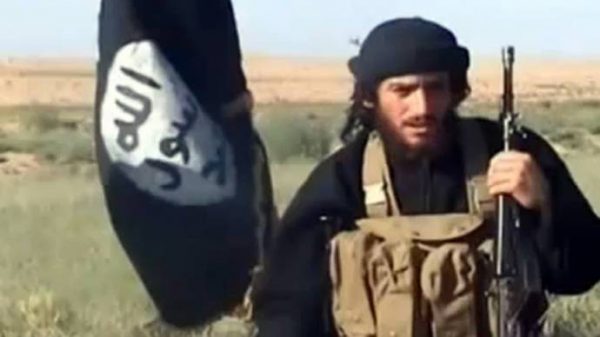
Almost two weeks after a drone strike targeted one of the Islamic State’s top leaders, the Pentagon said Monday that the militant — Abu Muhammad al-Adnani Al Shami— was confirmed dead.
In a statement, Pentagon Press Secretary Peter Cook offered no explanation to how the United States confirmed Adnani’s death or why it took so long.
“[The strike] is one in a series of successful strikes against ISIL leaders, including those responsible for finances and military planning, that make it harder for the group to operate,” Cook said, using another acronym for the group.
On Aug. 30, the Pentagon said it had struck Adnani near the town of al-Bab, Syria, but — at the time — could not confirm whether he was dead. That same day, the Islamic State, over its social media networks, said that Adnani had been killed in an airstrike while inspecting troops on the front line, although it did not specify exactly where he had died. On Aug. 31, Russia, citing “intelligence channels,” said it had also eliminated Adnani during an airstrike on a group of Islamic State fighters 16 miles west of where the Pentagon said it had targeted him.
A Syrian national, Adnani was responsible for helping craft some of the Islamic State’s most gruesome execution videos and calling for terrorist attacks outside of the group’s self-proclaimed caliphate. He was also seen as a possible successor to the Islamic State’s leader, Abu Bakr al-Baghdadi.
The competing strike narratives between the United States and Russia set off a bout of verbal sparring as they simultaneously took credit for Adnani’s death. Unnamed U.S. defense officials told reporters that Russia’s narrative was “laughable” and so the Russian Ministry of Defense took to social media to lambaste the Pentagon. In a Facebook post, the Russian Ministry of Defense said that American officials calling Russia’s claims a “joke” was the “sole thing they can say to justify their unawareness.”
A senior defense official, speaking on the condition of anonymity to discuss intelligence matters, said that the Pentagon waited longer than usual to ensure — through intercepted communications — that Adnani had been killed, because it had been “burned” in the past. Last year, Adnani was reportedly targeted in a U.S. strike but survived.
In March, the Pentagon also said it had killed the Islamic State’s minister of war, Omar Shishani, when it, in fact, did not. The Islamic State announced Shishani’s death in July after a U.S. airstrike targeted him — again — near the Iraqi city of Mosul.
The Russian air campaign over Syria, which began in fall 2015 with the stated aim of fighting terrorists, has received criticism for instead propping up Syrian President Bashar al-Assad and targeting civilian-populated areas with inhumane munitions including cluster and incendiary bombs. While Russia has supported Syrian ground troops and government-aligned militias, mainly around the embattled Syrian opposition stronghold of Aleppo, with airstrikes and artillery, Russian forces have sporadically struck Islamic State targets with heavy bombers, ship- and submarine-launched cruise missiles and bombing runs.
Targeting a senior leader such as Adnani is a rare move for the Russian air campaign. Russian aircraft have only sometimes used some of the more advanced precision munitions that are a hallmark of the U.S. campaign over Syria and Iraq, and has instead mostly used unguided or “dumb” bombs. While Russia has been accused of killing civilians in its strikes, the United States and its international partners are estimated to have killed between 1,000 and 1,500 civilians, according to AirWars.org.
On Monday, a cease-fire recently brokered by the United States and Russia went into effect throughout the war-torn country but was almost immediately violated. With many loopholes, caveats and skepticism from those on the ground, it is unclear how long — if it all — the reprieve will last.
Leave a Reply
You must be logged in to post a comment.